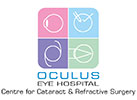Diabetic retinopathy is a serious eye condition related to diabetes. It can severely affect your vision if not handled properly. Knowing what causes it and how it shows up is vital for anyone managing diabetes. This blog is here to uncover the impacts of uncontrolled diabetes on your vision. We’ll also dive into important preventive steps. We’ll explore educational insights and proactive measures to combat this eye condition. These insights could change how you manage your diabetes. Keep reading to learn about keeping your eyes healthy while managing diabetes effectively.
Understanding and Managing Diabetic Retinopathy
Diabetic retinopathy happens when you’ve got high blood sugar that affects your eyes. This isn’t just about poor vision. It can affect your eyes’ ability to work at all. Here’s how this plays out in simple terms:
- High Blood Sugar Impact: When sugar levels are high, they hurt the tiny blood vessels in the eyes. Over time, this damage can get worse.
- Recognizable Symptoms and Stages: It starts with things like blurry vision. If you don’t get help, it can go through diabetic retinopathy stages leading to more serious symptoms and possibly losing vision. A visit to the doctor can help spot these symptoms early.
- Preventive Lifestyle: A good diet and exercise make a difference. Keeping an eye on your blood sugar levels reduces risks. Think of it like this:
- Eat healthily: More veggies and less sugar.
- Stay active: Regular exercises like walking.
- Check your sugar: Use a meter to check your levels.
- Regular Check-Ups: Schedule eye check-ups twice a year. New tech makes it easier to catch problems early. It’s simple and can save your sight.
Regular visits to your eye doctor can help catch diabetic retinopathy symptoms early. Modern technology can assist eye experts in spotting issues faster, offering a proactive approach to preserving eye health.
Treatment and Technological Advancements
If you discover you have diabetic retinopathy, don’t worry. There are treatments available:
- Traditional Treatments: These might include methods like laser surgery. Laser treatment helps to stop the condition from progressing.
- Innovative Advances: New treatments are emerging. Injections and tablet-based options are now common. Something as simple as anti-VEGF injections helps reduce blood vessel growth in the eyes.
We often hear myths about diabetic retinopathy treatment. Let’s clear some misconceptions. The condition isn’t just an old-person problem. Young people with diabetes can face it, too. Also, not everyone with diabetes will have eye issues, but they should remain alert.
Your safety net is a strong support system. Families and friends play a big role here. They provide emotional support and practical help as you deal with the condition. Whether it’s driving you to appointments or reminding you about check-ups, having a network makes all the difference.
Real-Life Impact and Future Perspectives
Personal stories can inspire us and offer hope. Here’s how diabetic retinopathy affects real lives:
- Personal Narratives: Hear stories of folks managing the condition. These tales can motivate and educate.
- Social and Economic Influences: Many in India face diabetic retinopathy and blindness due to diabetes and its economic constraints. Overcoming financial hurdles is vital for healthcare access.
Emerging technology is promising. AI helps with early detection and management in rural areas. It ensures more people get early treatment.
Hope and Awareness
The key takeaway here is about protecting your sight. Regular check-ups and simple lifestyle changes are essential. This includes a balanced diet and regular exercise.
In conclusion, be proactive about your eye health, especially if you have diabetes. Diabetic retinopathy management begins with awareness, continues with care, and thrives with community support. The right steps and support make a world of difference.


